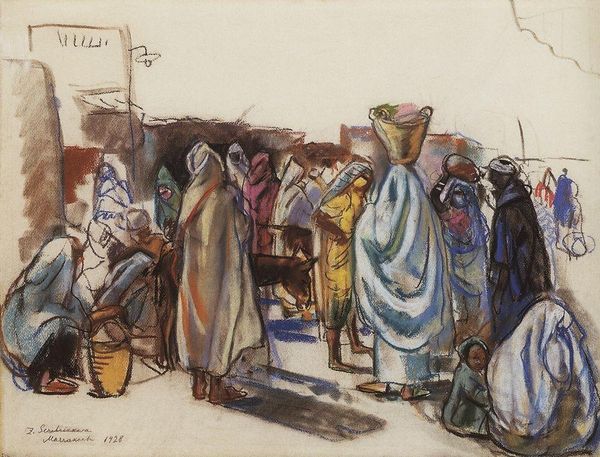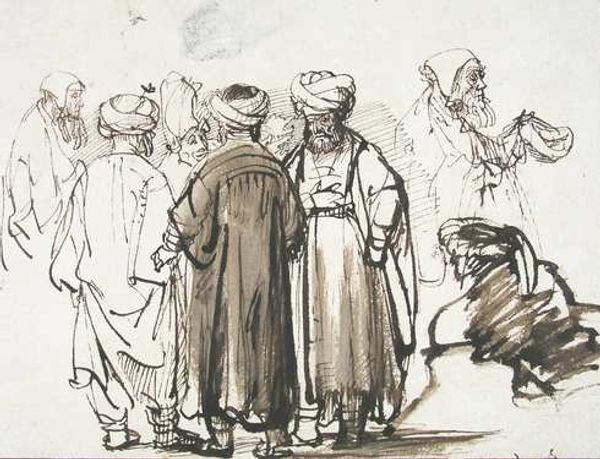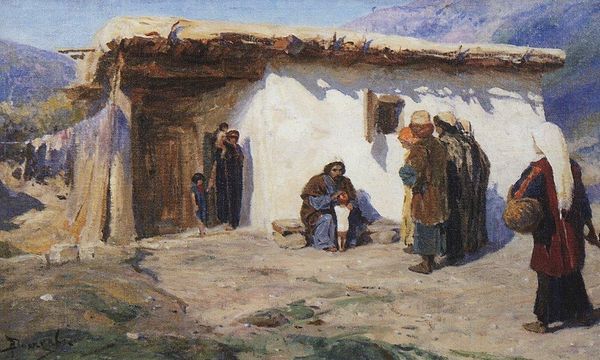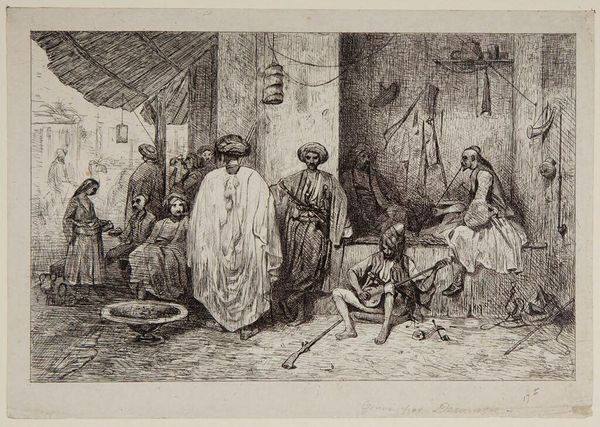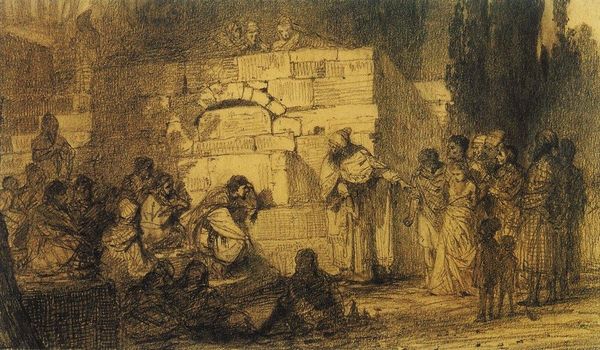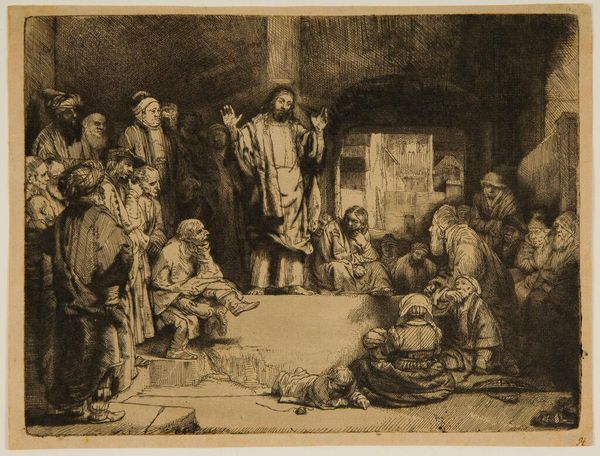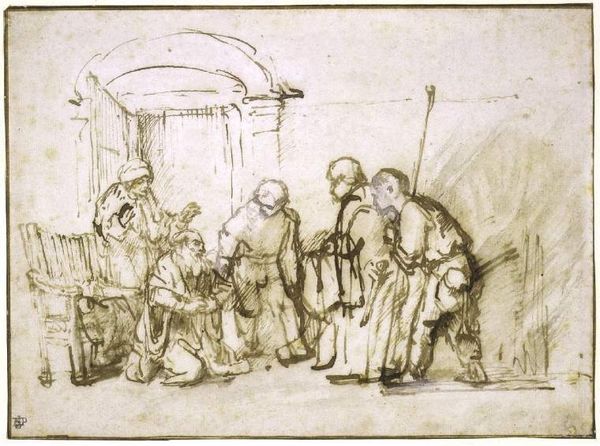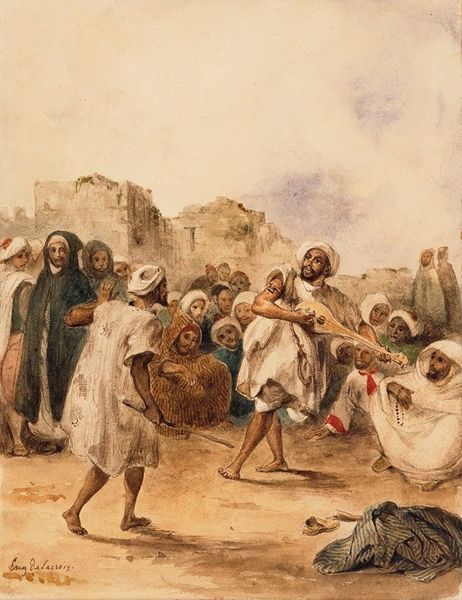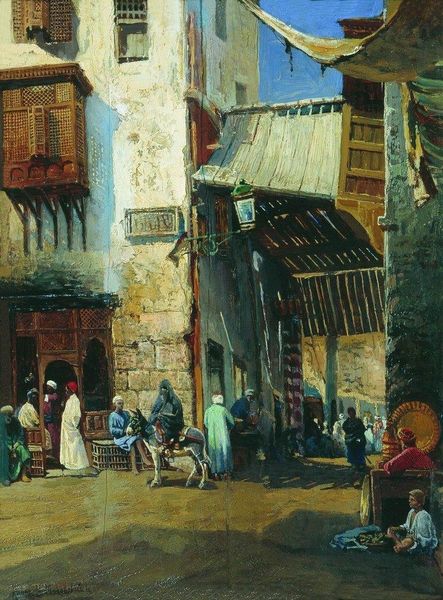
drawing, watercolor, ink
#
portrait
#
drawing
#
narrative-art
#
charcoal drawing
#
oil painting
#
watercolor
#
ink
#
russian-avant-garde
#
watercolor
Copyright: Public domain
Editor: This is Ilya Repin's "Prophet," created in 1890 using watercolor and ink. The sepia tones give it a somewhat biblical feel, but the figures are rendered so realistically that it's hard to place it in a specific time. What strikes you when you look at this? Curator: What immediately grabs me is the stark juxtaposition of figures – the opulent figures with their fine attire, seemingly indifferent, contrasted with the disheveled, perhaps even impoverished, individuals on the left. It asks us to confront inequality. Repin, working in late 19th-century Russia, was keenly aware of social divisions. Don’t you see the possible reflection of societal imbalance, almost a critical observation on the structures of power? Editor: I see that, the difference in attire is a striking distinction. I hadn't considered the socioeconomic aspect so overtly. Are you saying the 'prophet' figure perhaps represents a critical voice against this disparity? Curator: Precisely. And Repin was deeply involved in social and political discourse. Consider, the use of watercolor—it lends itself to capturing fleeting moments, social scenes unfolding with the immediacy of life itself. This Prophet may represent the voiceless, challenging those in power through bearing witness. What does the "prophet" suggest to you, based on pose and location? Editor: The prophet is standing tall with the stick in the center as everything swirls around, which makes me feel there is something important about them, while people suffer on one side, the opulent people walk on with indifference. I had seen this at first as a historical scene but didn't quite focus on class struggle, this has made me think differently. Curator: Exactly! Repin, a master of observation, invites us to examine these power dynamics, not just in 19th-century Russia, but potentially anywhere disparities persist today. Art as a call to critical awareness. Editor: I definitely learned how to interpret Repin's piece beyond its aesthetic values! Considering socio-political contexts really enhances understanding of the art.
Comments
No comments
Be the first to comment and join the conversation on the ultimate creative platform.
